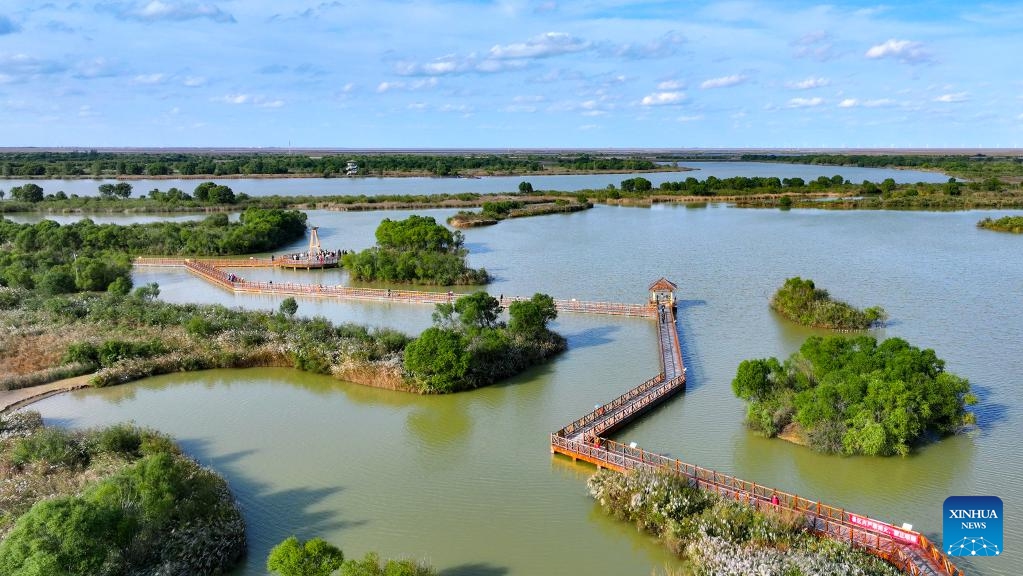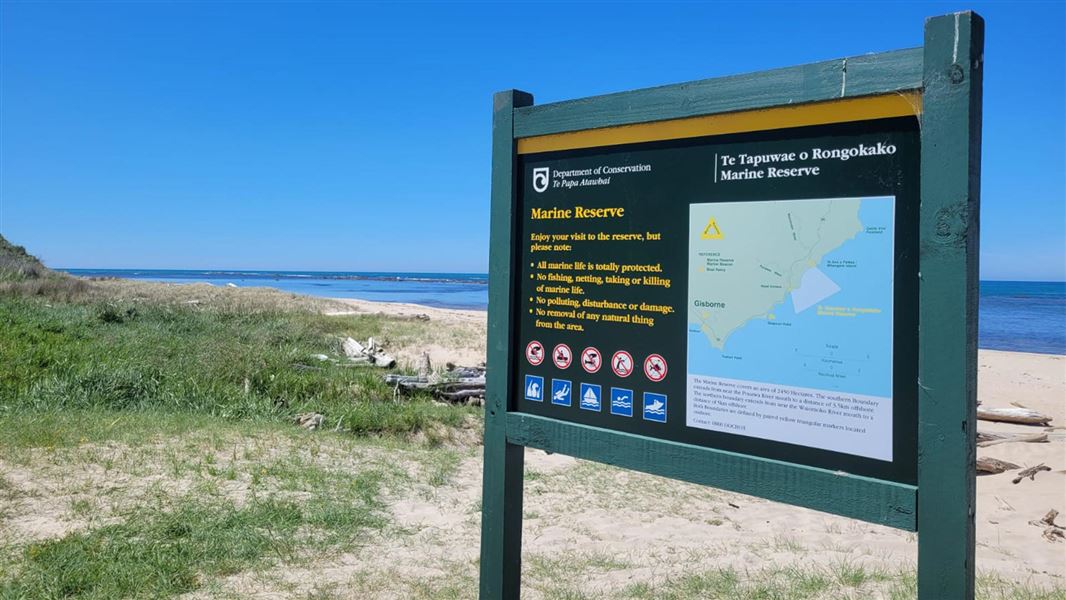US lawmakers and seafood leaders rally behind bill to block ‘unregulated’ fishing by China, Russia – intrafish.com

Report on the Fighting Foreign Illegal Seafood Harvest (FISH) Act and its Alignment with Sustainable Development Goals
1.0 Introduction and Legislative Context
The United States Senate has advanced a bipartisan legislative measure, the Fighting Foreign Illegal Seafood Harvest (FISH) Act, by incorporating it into the Fiscal Year 2026 National Defense Authorization Act (NDAA). The act, co-sponsored by Senators Dan Sullivan and Sheldon Whitehouse, is designed to protect the domestic seafood industry and address global challenges related to marine resource management, directly contributing to several United Nations Sustainable Development Goals (SDGs).
2.0 Advancing SDG 14: Life Below Water
The primary objective of the FISH Act is to combat illegal, unreported, and unregulated (IUU) fishing, a critical target under SDG 14, which seeks to conserve and sustainably use the oceans, seas, and marine resources. The legislation directly supports SDG Target 14.4, which calls for an end to overfishing and IUU fishing.
- Regulation and Enforcement: The act strengthens the regulatory framework by blacklisting foreign vessels confirmed to be engaged in IUU fishing, denying them access to U.S. ports and waters.
- Conservation of Fish Stocks: By targeting foreign fleets, particularly from China and Russia, that disregard harvesting rules, the act aims to prevent the depletion of fish stocks and protect marine ecosystems for future generations.
- Strengthening Institutions: The legislation enhances the enforcement capacity of the U.S. Coast Guard, a key institutional component for monitoring and ensuring compliance with maritime law.
3.0 Supporting Economic and Production Goals: SDG 8 and SDG 12
The FISH Act addresses the adverse economic impacts of IUU fishing on local communities, aligning with SDG 8 (Decent Work and Economic Growth) and SDG 12 (Responsible Consumption and Production).
- Fair Competition (SDG 8): The act seeks to create a level economic playing field for the Alaskan seafood industry. Unregulated and subsidized seafood products from IUU fishing operations enter the global market at artificially low prices, undercutting the value of responsibly harvested seafood and threatening the economic viability of fishing communities in Alaska.
- Responsible Production (SDG 12): By penalizing non-compliant actors, the legislation promotes sustainable production standards. It increases accountability for nations and fleets that do not adhere to responsible fishing practices, thereby improving the global competitiveness of sustainably sourced American seafood.
4.0 Fostering Global Partnerships and Strong Institutions: SDG 16 and SDG 17
The legislation emphasizes the need for robust governance and international collaboration, which are central tenets of SDG 16 (Peace, Justice and Strong Institutions) and SDG 17 (Partnerships for the Goals).
- Rule of Law (SDG 16): The act reinforces the rule of law on the high seas by establishing clear consequences for illicit activities. It targets bad actors directly rather than imposing broad regulatory burdens on compliant seafood companies.
- International Agreements (SDG 17): A key component of the FISH Act is its mandate to pursue enforceable international agreements to curb IUU fishing practices globally. This highlights a commitment to multilateral action and partnerships to achieve sustainable ocean governance.
5.0 Conclusion and Legislative Outlook
The FISH Act represents a significant legislative effort to align national policy with global sustainability objectives. Its focus on ending IUU fishing directly contributes to the conservation of marine biodiversity (SDG 14) while simultaneously protecting economic stability (SDG 8), promoting responsible supply chains (SDG 12), and strengthening international governance (SDG 16 & 17). While the act has successfully passed the Senate as part of the NDAA, it must still navigate further legislative processes before being enacted into law.
Which SDGs are addressed or connected to the issues highlighted in the article?
SDG 14: Life Below Water
- The article’s central theme is the “Fighting Foreign Illegal Seafood Harvest (FISH) Act,” which directly addresses the conservation and sustainable use of marine resources. It focuses on combating illegal, unreported, and unregulated (IUU) fishing, which threatens marine ecosystems and fish populations. The text states that foreign fleets “ravage fish stocks without regard for any other users or future generations,” highlighting the direct impact on life below water.
SDG 8: Decent Work and Economic Growth
- The legislation is designed to protect Alaska’s seafood industry, a vital component of the state’s economy. The article notes that the industry has been “hit hard by competition from unregulated foreign fleets” and that IUU fishing “drives down the economic returns to Alaska’s fishing communities.” By aiming to “level the playing field,” the act supports the economic viability and sustainability of jobs within this sector.
SDG 16: Peace, Justice and Strong Institutions
- The article discusses the creation and implementation of legislation (the FISH Act) and the strengthening of enforcement bodies (the Coast Guard). This relates to developing effective and accountable institutions to combat illicit activities. The act aims to create a legal process to “blacklist foreign vessels engaged in IUU fishing” and “strengthen Coast Guard enforcement,” which are functions of strong national institutions.
SDG 17: Partnerships for the Goals
- The FISH Act is not just a domestic policy; it seeks to address a global issue through international cooperation. The article mentions that the legislation will “push for enforceable international agreements to curb illicit fishing practices.” This highlights the need for global partnerships to achieve the goal of ending IUU fishing.
What specific targets under those SDGs can be identified based on the article’s content?
SDG 14: Life Below Water
- Target 14.4: By 2020, effectively regulate harvesting and end overfishing, illegal, unreported and unregulated fishing and destructive fishing practices. The entire purpose of the FISH Act is to combat IUU fishing. The article explicitly states the act is aimed at “combatting alleged illegal, unreported, and unregulated (IUU) fishing by foreign fleets” to stop them from ravaging fish stocks.
- Target 14.6: By 2020, prohibit certain forms of fisheries subsidies which contribute to overcapacity and overfishing, eliminate subsidies that contribute to illegal, unreported and unregulated fishing. While not mentioning subsidies directly, the act addresses the economic imbalance caused by illicit practices. By penalizing IUU fishing, it works to eliminate the unfair economic advantages these fleets have, which “undercut the value of responsibly produced seafood” and disrupt the market, aligning with the spirit of this target.
SDG 8: Decent Work and Economic Growth
- Target 8.5: By 2030, achieve full and productive employment and decent work for all women and men. The article emphasizes that IUU fishing negatively “impacts not only the marketplace but drives down the economic returns to Alaska’s fishing communities.” Protecting these communities and the seafood sector supports stable employment and economic well-being.
SDG 16: Peace, Justice and Strong Institutions
- Target 16.a: Strengthen relevant national institutions, including through international cooperation, to build capacity… to combat… crime. The article details how the FISH Act will “strengthen Coast Guard enforcement,” which is a key national institution responsible for maritime law enforcement and security.
SDG 17: Partnerships for the Goals
- Target 17.16: Enhance the global partnership for sustainable development. The article states that a goal of the legislation is to “push for enforceable international agreements to curb illicit fishing practices,” which is a direct call for international cooperation and partnership to solve a transnational problem.
Are there any indicators mentioned or implied in the article that can be used to measure progress towards the identified targets?
SDG 14: Life Below Water
- Implied Indicator for Target 14.4: The number of foreign vessels engaged in IUU fishing that are blacklisted from US ports and waters. The article states the legislation “would blacklist foreign vessels engaged in IUU fishing,” making this a direct and measurable outcome of the act’s implementation.
- Implied Indicator for Target 14.4: The proportion of fish stocks within biologically sustainable levels. The concern that foreign fleets “ravage fish stocks” implies that a key measure of success would be the recovery and maintenance of healthy fish populations in the affected areas.
SDG 8: Decent Work and Economic Growth
- Implied Indicator for Target 8.5: The measure of economic returns to Alaska’s fishing communities. The article explicitly mentions that IUU fishing “drives down the economic returns.” Therefore, tracking the value of seafood landings and the overall economic health of these communities would serve as a direct indicator of the act’s effectiveness.
SDG 16: Peace, Justice and Strong Institutions
- Implied Indicator for Target 16.a: The number of enforcement actions undertaken by the Coast Guard related to IUU fishing. Since the act aims to “strengthen Coast Guard enforcement,” an increase in surveillance, patrols, and enforcement actions against illicit fishing would be a logical indicator of progress.
SDG 17: Partnerships for the Goals
- Implied Indicator for Target 17.16: The number of new or strengthened international agreements to combat IUU fishing to which the US becomes a party. The article’s mention of a “push for enforceable international agreements” makes the successful negotiation and implementation of such agreements a clear indicator of progress.
ol>
SDGs, Targets, and Indicators Analysis
| SDGs | Targets | Indicators (Mentioned or Implied) |
|---|---|---|
| SDG 14: Life Below Water | 14.4: End illegal, unreported and unregulated (IUU) fishing and destructive fishing practices. | Number of foreign vessels blacklisted from US ports and waters for engaging in IUU fishing. |
| SDG 8: Decent Work and Economic Growth | 8.5: Achieve full and productive employment and decent work for all. | Measure of economic returns to Alaska’s fishing communities. |
| SDG 16: Peace, Justice and Strong Institutions | 16.a: Strengthen relevant national institutions… to combat crime. | Number of enforcement actions taken by the Coast Guard against IUU fishing. |
| SDG 17: Partnerships for the Goals | 17.16: Enhance the global partnership for sustainable development. | Number of enforceable international agreements established to curb illicit fishing practices. |
Source: intrafish.com
What is Your Reaction?
 Like
0
Like
0
 Dislike
0
Dislike
0
 Love
0
Love
0
 Funny
0
Funny
0
 Angry
0
Angry
0
 Sad
0
Sad
0
 Wow
0
Wow
0
















































:focal(1500,1000)/https://media.globalcitizen.org/a6/9a/a69a4720-d8a1-4715-b596-18738d03c05c/rotary_polio_hero_image.jpg?#)







/countries/sri-lanka/photo-credit---dmc-sri-lanka.tmb-1200v.jpg?sfvrsn=dc298bcc_1#)

















